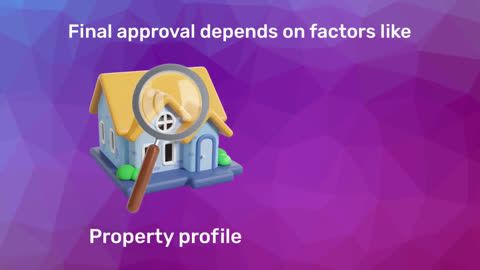Understanding co-lending
Co-lending involves a partnership between a primary lender, typically a bank or financial institution, and a co-lender, which can be another bank, Non-Banking Financial Company (NBFC), or fintech company. The primary lender originates and services the loan, while the co-lender participates in funding the loan and shares the associated risks.In this arrangement, the primary lender usually handles the loan application, credit assessment, and documentation processes, while the co-lender provides a portion of the funding. This collaboration allows for greater flexibility and efficiency in the lending process, as both parties leverage their respective strengths to meet the borrower’s needs.
How co-lending works
- Loan origination: The primary lender initiates the loan process, including marketing, loan application collection, and initial credit assessment. The borrower applies for the loan through the primary lender.
- Assessment and approval: The primary lender assesses the borrower’s creditworthiness, income, and other relevant factors. Once the initial assessment is complete, the primary lender communicates the loan terms to the co-lender for review and approval.
- Funding: Upon approval, the co-lender contributes a portion of the total loan amount. The co-lender’s contribution is typically based on the agreed-upon terms between the lenders.
- Loan disbursement: The primary lender disburses the loan amount to the borrower, incorporating the co-lender’s portion. The primary lender also manages the loan servicing, including repayment collection and customer support.
- Risk sharing: Both the primary lender and the co-lender share the risk associated with the loan. This shared risk helps mitigate potential losses and encourages lenders to collaborate on larger loan amounts or more diverse borrower profiles.
- Repayment and servicing: The borrower makes regular repayments to the primary lender, which then distributes the appropriate portions to the co-lender. The primary lender handles all customer service inquiries and maintains the loan account.
Types of co-lending models
Co-lending models vary depending on the structure and partnership between lenders. Here is a breakdown of the most common types of co-lending models:| Model | Description | Advantages | Challenges |
| Single primary lender | One primary lender collaborates with one co-lender to fund a loan. | Simplified process with clear responsibility distribution. | Limited flexibility if either lender faces issues. |
| Multiple co-lenders | A primary lender works with multiple co-lenders to provide a larger loan amount. | Greater loan amounts and risk diversification. | Complex coordination and management between multiple parties. |
| Joint venture model | Lenders form a joint venture to pool resources for specific types of loans. | Combined expertise and resources, often for targeted markets. | Requires strong agreement on terms and management. |
| Syndicated co-lending | Multiple lenders participate in a syndicated loan with a lead arranger. | High loan amounts and shared risk among many lenders. | Coordination and communication can be challenging. |
| Partnership model | Lenders partner with fintech companies or NBFCs for specific loan products. | Enhanced technology integration and customer reach. | Regulatory and operational challenges in partnerships. |
Benefits of co-lending
- Enhanced loan accessibility: Co-lending increases the availability of loans by combining the resources of multiple lenders. This is particularly beneficial for borrowers who may not qualify for a full loan amount from a single lender.
- Shared risk: By sharing the loan risk, lenders can offer larger loan amounts or extend funds to borrowers with less favourable credit histories. This risk-sharing model encourages lenders to support a broader range of borrowers.
- Better loan terms: Co-lending can lead to more favourable loan terms for borrowers, such as lower interest rates or longer repayment periods. The collaboration between lenders can result in competitive offers that might not be available through traditional lending channels.
- Increased lending capacity: Lenders can expand their lending capacity by partnering with other financial institutions. This allows them to participate in larger loan transactions or fund projects that require substantial capital.
- Streamlined process: Co-lending arrangements often streamline the loan application and approval process. The primary lender handles most of the administrative tasks, making the process more efficient for borrowers.
Role of financial institutions in co-lending
In a co-lending arrangement, financial institutions play crucial roles that contribute to the effectiveness and efficiency of the lending process. Here is an overview of their roles:1. Primary lender:
- Loan origination: The primary lender is responsible for initiating the loan application process. This includes marketing the loan, collecting applications, and performing the initial credit assessment.
- Credit assessment: The primary lender evaluates the borrower’s creditworthiness, income, and other factors to determine loan approval. This assessment forms the basis of the co-lending arrangement.
- Documentation: The primary lender handles the collection and verification of documents required for loan processing. This includes identity proof, income proof, and property-related documents.
- Loan servicing: Once the loan is approved and disbursed, the primary lender manages the loan account, including repayment collection and customer support.
- Funding: The co-lender provides a portion of the loan amount based on the agreed-upon terms with the primary lender. This shared funding helps in meeting larger loan requirements or catering to more borrowers.
- Risk sharing: By participating in co-lending, the co-lender shares the risk associated with the loan. This collaboration helps mitigate potential losses for both the primary lender and the co-lender.
- Expertise contribution: Co-lenders may bring additional expertise or resources to the table, such as specialised knowledge in certain markets or advanced technology for loan processing.
- Compliance and oversight: Co-lenders ensure that their portion of the loan adheres to regulatory requirements and internal policies. They work closely with the primary lender to maintain compliance throughout the loan’s lifecycle.
- Technology integration: Fintech companies and Non-Banking Financial Companies (NBFCs) often partner with traditional banks to provide advanced technology solutions, streamline the loan process, and enhance customer experience.
- Market reach: These entities help expand the reach of co-lending products to underserved markets, offering innovative solutions that cater to a broader range of borrowers.
- Customer acquisition: Fintech companies and NBFCs leverage digital platforms to attract and onboard borrowers, improving the efficiency and accessibility of co-lending arrangements.
Co-lending vs. traditional lending
| Feature | Co-lending | Traditional lending |
| Number of lenders | Two or more lenders | Single lender |
| Risk sharing | Risk is shared between lenders | Risk is borne by a single lender |
| Loan amount | Potentially higher due to combined resources | Limited by the lender’s capacity |
| Loan terms | Can be more favourable due to competition | Depends on the lender’s terms |
| Application process | Streamlined with shared responsibilities | Directly with one lender |
How co-lending impacts home loans
Home loans are a common application of co-lending. The collaboration between lenders in co-lending arrangements can make it easier for borrowers to secure financing for purchasing or constructing a home. By leveraging the strengths of multiple financial institutions, co-lending can offer enhanced loan amounts, more competitive interest rates, and improved loan terms.For example, if you are looking to purchase a new home and find that your current lender’s loan offer is insufficient, co-lending can help by providing additional funding through a partner lender. This can make a significant difference in your ability to buy the home of your dreams or afford a larger property.
How to explore co-lending for your home loan
- Research lenders: Look for financial institutions that offer co-lending arrangements. Many banks and NBFCs have partnerships with other lenders to provide co-lending solutions.
- Compare offers: Evaluate the terms and conditions of co-lending offers from different lenders. Compare interest rates, repayment terms, and any additional fees.
- Apply for a loan: Submit your loan application to a primary lender that participates in co-lending. The primary lender will handle the application process and coordinate with the co-lender.
- Review terms: Ensure that you understand the terms of the co-lending agreement, including how repayments will be managed and how risk is shared between lenders.
- Secure your home loan: Once approved, the co-lending arrangement will help you secure the necessary funding for your home purchase or construction.




